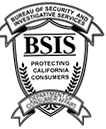Businesses incur preventable losses every day, whether they’re happening through employee misconduct, accidental waste, vandalism, fraud, employee theft, abuse of company policies, shoplifting, breakage, or data entry errors. When these kinds of actions, intentional or unintentional, cause business loss, it is referred to in the industry as revenue shrink. Even though businesses continue investing in new advanced technology to minimize shrinkage, typical losses take away 2% of yearly sales.
Actions that may have been stopped or prevented end up reducing business profits. However, it doesn’t have to be this way. By identifying the problem and moving to counter it, businesses can start preventing and preparing for unnecessary losses effectively. What they ought to do is implement actionable and clear retail loss prevention plans. It is the only way to combat problems like employee theft and shoplifting effectively. In this article, you learn how to create an effective loss prevention plan.
Why You Need a Loss Prevention Plan for Your Business
Sometimes, non-retail business owners dismiss loss prevention as a problem that only affects retail stores. However, every company can benefit when it implements a loss prevention strategy that protects its accounts and inventory. A solid loss prevention plan helps you:
- Protect your net profits.
- Enhance customer satisfaction through keeping correct inventory.
- Fight shoplifting.
- Develop a habit of responsibility or safety that results in happier and more invested staff.
- Avoid supplier error or fraud, for instance, when you receive an understocked order.
- Avoid administrative errors, like a wrongly listed selling price or accounting mistake.
- Inventory damage, e.g., spoilage or waste.
- Prevent Employee theft.
What Creating an Effective Loss Prevention Strategy Entails
A strong loss prevention strategy entails more than just installing surveillance cameras in your business. Your store requires a tactical, top-down focus on preventing losses if you wish to achieve a real impact on retail losses. Creating a successful loss prevention plan involves the following steps:
Step 1 – Researching Thoroughly
A loss prevention plan starts with research. It is the best way of determining if you have a problem. Start a detailed store policies review. You may have to shadow your workers to gain a clear picture of how they do their work.
The next stage of your research is analyzing historical data. Your inventory management system ought to have excellent reporting tools that show any patterns in that data that could point at regular escalations in preventable employee errors or losses. Fraud and theft are hard to track unless you find gaps in the data which show something’s missing.
Step 2 – Sizing Up the Problem
After research, sizing up the company problem comes next. This involves an in-depth comprehension of the issue at hand. Before fixing it, you must understand the problem. Measuring your beginning point is your second step. Establish what inventory shrinkage is like in your company and how much you are losing in yearly sales. You also have to know how much you’ll gain by developing a loss prevention strategy.
Determining retail shrinkage is not complicated. Shrinkage occurs when you have fewer items in stock than on the inventory list. The difference in value between these two is the retail shrink. Say, for instance, your accounting reveals you have $500 in inventory. However, when you do physical counting, you find there is $400 worth of inventory. In this case, your inventory shrinkage will be $100. To calculate retail shrinkage percentage, you divide the shrinkage by total sales for the same period.
These baselines are the beginning point to enable you to set concrete objectives for the loss prevention plan.
Step 3 – Developing a Solid Loss Prevention Strategy
Through research and sizing up the problem, you will develop a more coordinated and proactive approach to loss prevention. This kind of approach entails some or all of the following:
Adapting and Staying Engaged
Once in a while, remind your employees of the objectives of your loss prevention program. Be transparent and open about how the loss prevention tactics are working. Give employees and managers feedback on how the company in general and their departments are performing.
Ensure you continue giving that feedback consistently. This way, employees develop the tendency to evaluate their work. This, in turn, results in more improvements, and the loss prevention plan becomes a self-perpetuating loop.
Monitoring Loss Trends
Some losses are only apparent over a given period. Accounting errors usually reveal themselves this way, and minor inventory losses could accumulate over a particular period. You have to gather a steady sequence of data on these accounts and inventories. Watch for emerging trends and analyze data for unexpected losses or patterns.
Conduct regular and scheduled audits for these accounts. Direct managers to conduct a given number of surprise audits each quarter. Regularly assessing how your loss prevention program is performing keeps it cost-effective. It also prevents you from overspending on unnecessary technology or new initiatives.
Using Strong Deterrents
Presenting the appearance of powerful security is just as critical as having strong security. Proving that you take any loss seriously with extraordinary security measures is highly effective. Do you presently have committed employees working to stop shrinkage or shoplifting at various locations? Could you otherwise install surveillance cameras?
Surveillance cameras are a powerful deterrent to shoplifting, even if they aren’t recording. Noticeable anti-theft labels on inventory items also scare off thieves. Simple signs by entryways cautioning that you’re monitoring any theft send shoplifters away to a less vigilant target.
Automating Inventory Controls
Find out what measures you may automate. Automation helps you offset extra labor needed to prevent losses better. You could deploy asset tracers to avoid losing your expensive company equipment. Asset tracers automatically record each transaction. This helps you always to know who has signed out what items without a possibility of human errors.
Asset tracers can substantiate that the right items are put in compartments. All pieces of equipment are tagged with a wireless tag. These tags are read in the asset tracer system whenever a piece of equipment is returned or taken.
This minimizes honest mistakes and internal theft. A user cannot falsely claim that he/she returned a laptop to an unattended compartment since the system will verify whether the machine was indeed placed in the locker. You could even configure your locker system to alert supervisors if someone tries a false return or an asset is not returned.
Updating Accounting
Recall that preventing losses is about so much more than addressing theft. At times, losses will only manifest on the balance sheet. You should consider whether or not you may require new accounting methods.
Most businesses only conduct cost accounting. This means they usually track inventory depending on the money they spent on several items. Introducing retail accounting involves a lot of work, but usually, it discloses more administrative mistakes. This accounting technique tracks actual sale prices over a given period, including markdowns, markups, and retail prices on specific items.
You can identify shrinkage more easily when you use retail accounting than when you use other techniques. The tradeoff is that tracking inventory using retail accounting has to be more meticulous. For instance, a markdown mistake will be shrinkage if it’s not identified immediately using this technique.
Employee Training and Using Clear Communication
You should make loss prevention part of the new employee orientation. Let your new workers know your company does care about its workers and strives to have them work in a danger-free environment.
You will need your workers’ help to flush out individuals committing workplace theft before becoming a threat to the business and their coworkers. Your employees will also play a critical role as they will be alerting managers the moment they come across accounting errors.
Once you have done the orientation, ensure loss prevention remains a priority in your workers’ minds. Send the managers status reports to have regular feedback about how their team, store, or department is preventing business losses. Communicate often (maybe through company email), reminding everybody of how critical loss prevention is.
Having Clear Policies
You must enforce loss prevention consistently and regularly for your efforts to hold. The quickest way of losing worker buy-in is for them to witness your business inconsistently implement loss prevention measures. The best tool you can use to apply a newly-developed loss prevention initiative is a documented policy.
Everybody in your business ought to understand how they’re expected to assist in preventing losses. They have to know the business’s responsibilities. Your policy must also detail all the necessary procedures to prevent and respond to losses.
In case your company has experienced internal theft before, you may need to consider revising your hiring policies. Even though you should treat your workers as assets as far as the loss prevention plan is concerned, you should make sure that you are hiring a team that’ll protect your business.
For instance, consider whether further background screenings or reference checks might be necessary for warehouse employees and whether credit checks are sensible as part of screening account candidates.
Encouraging Buyer-In and Leveraging Your Employees
Experts in loss prevention have established that encouraging workers to buy into a new loss prevention initiative is often more effective than merely offering punishment or rewards to persuade them to comply. Employees need to view your idea as a worthy cause they can support. When they invest in the business’s success, they’re highly likely to safeguard it from any loss.
Explain to your workers that you wish to develop a more conducive working environment for them, and preventing losses is part of the plan. And to emphasize this message, you could invent other means to prove to the workers how much you value them and care about their success.
Link your prevention plan to any other efforts you are making to support the employees. Also, consider implementing:
- Career mentoring.
- More frequent worker appreciation events.
- A performance-based raise schedule when it’s an option financially.
Using a Cash Safe
Businesses with cash face a higher risk for cash shrinkage and robberies. Do not make it simple for customers or employees to steal money from your company. Keep the money locked away and safeguarded in cash management safe. When you lock your assets away, you will be capable of lessening one of the greatest threats to your company profits.
Creating an Emergency Response Plan
Your business needs a clear, detailed emergency response plan for sudden violence and other incidents. It also requires a means to clarify and rehearse that plan to workers. Form an action plan and communicate it down the line from the owner to the part-time sales team. If everybody is trained and ready for emergencies, your store has a higher chance of evading losses when a crisis strikes.
Establishing Support from Management
For you to reduce business losses effectively, your commitment to preventing shrinkage ought to begin from the top. Have the senior management commit to making your loss prevention strategy a priority. This puts power into your action plan and ensures there are adequate resources to allocate to the necessary investments.
Hiring a Loss Prevention Manager
Employing and training staff with the specific aim of reducing inventory shrinkage will give you a head start in fighting against company losses. For most businesses, it is easier to enact a loss prevention plan off of an individual’s plate.
That is why hiring a person whose primary duty is spearheading loss prevention efforts is something worth considering, especially as your company grows. Additionally, you can hire an expert security officer who serves that purpose instead of depending on your staff to confront possible shoplifters themselves.
Strategies to Prevent Theft and Shoplifting
We have described what creating an effective loss prevention strategy entails. So what tactics do you need to consider to reduce shoplifting and theft? Every business, regardless of how small or big it is, faces theft threats.
Larger businesses usually have trained and qualified loss prevention experts whose duty is to help prevent shoplifting. In case this is not a practical option for you at the moment, then there are many changes you could initiate to ensure shoplifters have a hard time.
Outstanding Customer Service
It is good practice to concentrate on excellent customer service. Good customer service will help you deter the would-be thieves. Regular best practices of customer service (for instance, greeting customers when they enter your store and staffing the floor adequately) serve two purposes. They let the customers who mean well know they are welcome and will be helped when they need it. It also assures visitors who don’t mean well that they are seen.
Conspicuous Signage and Surveillance
Talking of letting visitors and customers know they are seen, installing surveillance cameras in your store is always good. Uniformed security, noticeable surveillance cameras, and signposts making customers/visitors aware of the two are a strong deterrent against theft.
Deliberate Organization of the Store
A store full of disorganized goods is like a playground for shoplifters. It makes it easier to take any number of merchandise without leaving any trace. After all, how can an employee tell a product is missing when items do not have a selected location where they all should be? Organize your store well and have your employees tidy up and restock shelves regularly all through the day.
Step 4 – Implementing the Loss Prevention Plan
Developing and implementing a loss prevention plan may save you hundreds, if not thousands of dollars. With new policies and a clear strategy in place, your roadmap ensures your loss prevention plan’s successful implementation.
You may have to make minor changes to your plan that account for real-world situations. Collecting employee feedback will help you see what’s working and what is not. Don’t change too much since significant changes may derail your efforts. Note that your plan is dependent on research with proven strategies to prevent losses. Should you stick to it, you will see visible improvements in your inventory and bottom line management.
We have two kinds of losses, non-malicious (accidents that happen) and malicious (fraud and theft). Your loss prevention strategy has to differentiate between these two. Additionally, it has to maintain a running record of non-malicious losses as a result of the following:
- Problems at checkout.
- Delivery errors.
- Product obsolescence.
- Pricing errors.
- Damage.
- Spoilage.
Most of the issues that happen in non-malicious losses are preventable through employee training and creating clear policies. Obsolescence and product spoilage can effectively be tracked via your sale software. Rectifying these mistakes improves how you do your business.
Partner With Expert Retail Loss Prevention Services Near Me
Shoplifting and employee theft are serious problems that affect a business and eventually cause massive losses if it remains unaddressed. If you have a busy store, particularly during seasons such as holidays, it’s no doubt that you’ll be overwhelmed with business as it will be flooded with customers. As your workers try to keep up with the customers’ overwhelming demands, most things could happen and go unnoticed.
One of the main areas where trained security guards from Green Knight Security shine is offering loss prevention services. Once you employ our services, shoplifter, thieves, or anybody else won’t destroy your company. We will help you protect your store in Los Angeles, CA while teaching your employees how to make sure theft does not affect the business. Call us at 844-457-8326, and we will be glad to offer our services right away.







